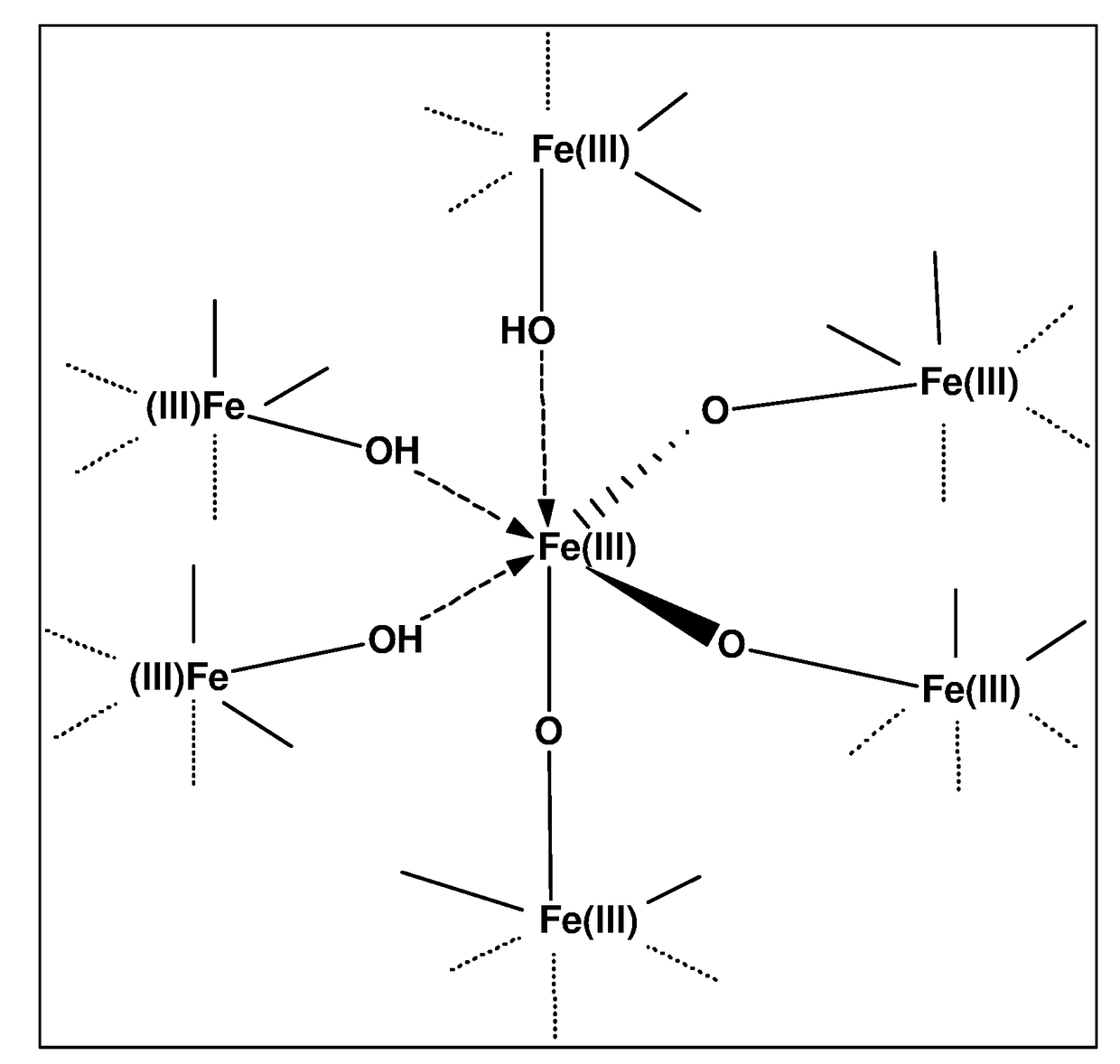Process for simultaneous removal of arsenic and sulphur from hydrocarbon streams
a technology of hydrocarbon streams and hydrocarbons, which is applied in the direction of gaseous mixture working up, separation processes, other chemical processes, etc., can solve the problems of promoting operational discontinuity, affecting catalyst performance, and compromising the performance of catalytic process treatment, so as to minimize or eliminate toxicological risks, minimize or eliminate all negative environmental effects generated
- Summary
- Abstract
- Description
- Claims
- Application Information
AI Technical Summary
Benefits of technology
Problems solved by technology
Method used
Image
Examples
example 1
Obtaining Shale Oil
[0070]A sample of schist rock obtained from schist mining of São Mateus do Sul, Paraná, Brazil, was ground to a granulometry of 6 Tyler mesh (3.6 mm) and submitted to the Fischer test (ASTM D3904-90). The particles obtained were submitted to the pyrolysis conditions, with heating from ambient temperature (25° C.) to a temperature of 500° C., simulating the retorting process. The test made it possible to collect the shale oil produced in the form of condensate, with a yield of 9% w / w and with a content of 30,300 ppb of total arsenic according to the test by ICP-MS (Inductively coupled plasma mass spectrometry) and content of 1.28% w / w of total sulphur.
example 2
[0071]A sample of schist rock obtained from schist mining of São Mateus do Sul, Paraná, Brazil, was ground to a granulometry of 6 Tyler mesh (3.6 mm). Homogeneous mixing of 80 g of these schist particles with 20 g of limonite ore particles, obtained from nickel mining deposits of Niquelandia, Goias, Brazil, containing 52% w / w of Fe; and 70-80% of α-FeOOH, was carried out. The mixture was submitted to the Fischer test (ASTM D3904-90), where the particles were treated in conditions of pyrolysis, with heating from ambient temperature (25° C.) to a temperature of 500° C., simulating the retorting conditions, as in example 1. The test made it possible to collect the shale oil, produced in the form of condensate, with a yield of 9% w / w and with a content of 1200 ppb of total arsenic according to the test by ICP-MS (Inductively coupled plasma mass spectrometry) and 0.81% w / w of total sulphur. In this way, the process now proposed gave a reduction of 96.0% w / w of the total arsenic content a...
example 3
[0072]A naphtha stream derived from petroleum refining in the distillation range between 20° C. and 196° C., containing 485 ppm of total sulphur, 183 ppm of mercaptide sulphur and 5000 ppb of arsenic was used as contaminated feed to be treated. This naphtha stream was passed through a bed of extruded particles, consisting of limonite ore. The limonite used was obtained from nickel mining deposits of Niquelandia, Goias, Brazil, containing 52% w / w of Fe; and 70-80% of α-FeOOH. Extruded particles were used to facilitate flow of the naphtha through the bed, avoiding blocking of the flow by any collapse of the limonite particles, which are friable in their natural form. The extruded particles were prepared by extrusion of paste consisting of natural limonite and dilute solution of binder, homogenized and dried for 3 hours to remove all moisture. The fixed bed of particles of extruded limonite was further submitted to drying at 120° C. for 3 hours, in a stream of N2. The naphtha stream wa...
PUM
| Property | Measurement | Unit |
|---|---|---|
| temperature | aaaaa | aaaaa |
| temperature | aaaaa | aaaaa |
| temperature | aaaaa | aaaaa |
Abstract
Description
Claims
Application Information
 Login to View More
Login to View More - R&D
- Intellectual Property
- Life Sciences
- Materials
- Tech Scout
- Unparalleled Data Quality
- Higher Quality Content
- 60% Fewer Hallucinations
Browse by: Latest US Patents, China's latest patents, Technical Efficacy Thesaurus, Application Domain, Technology Topic, Popular Technical Reports.
© 2025 PatSnap. All rights reserved.Legal|Privacy policy|Modern Slavery Act Transparency Statement|Sitemap|About US| Contact US: help@patsnap.com


